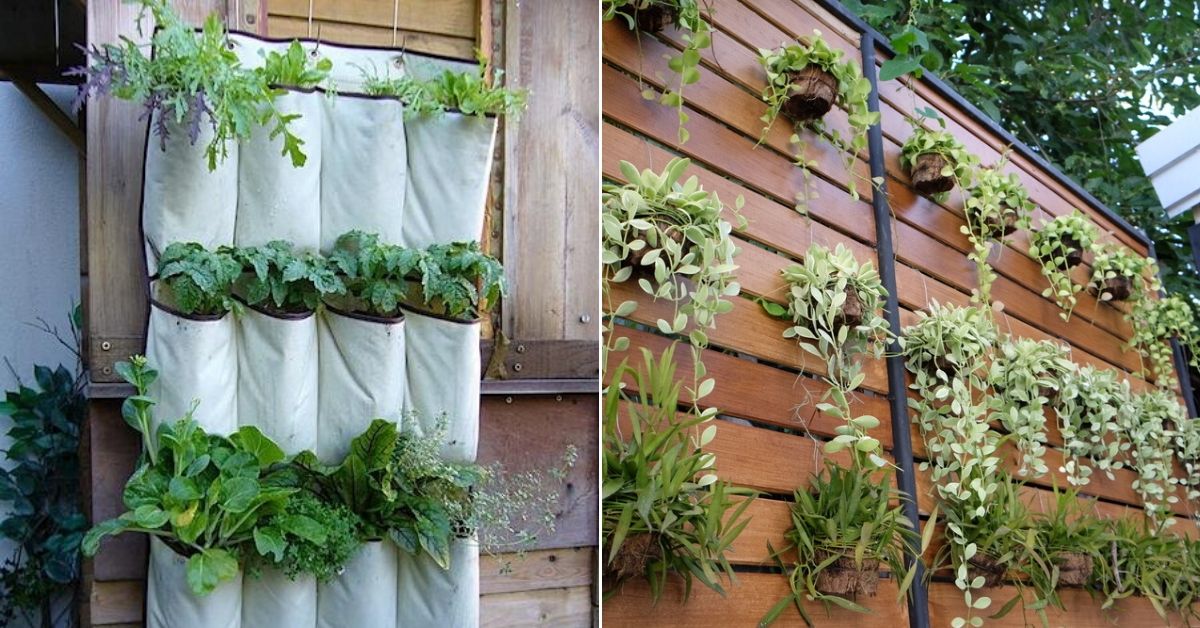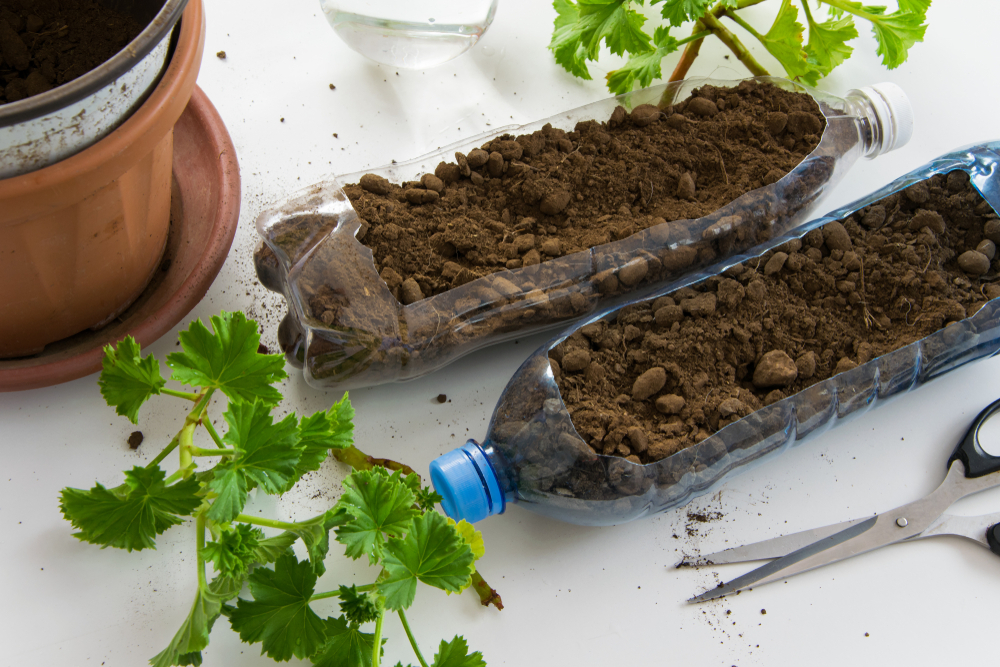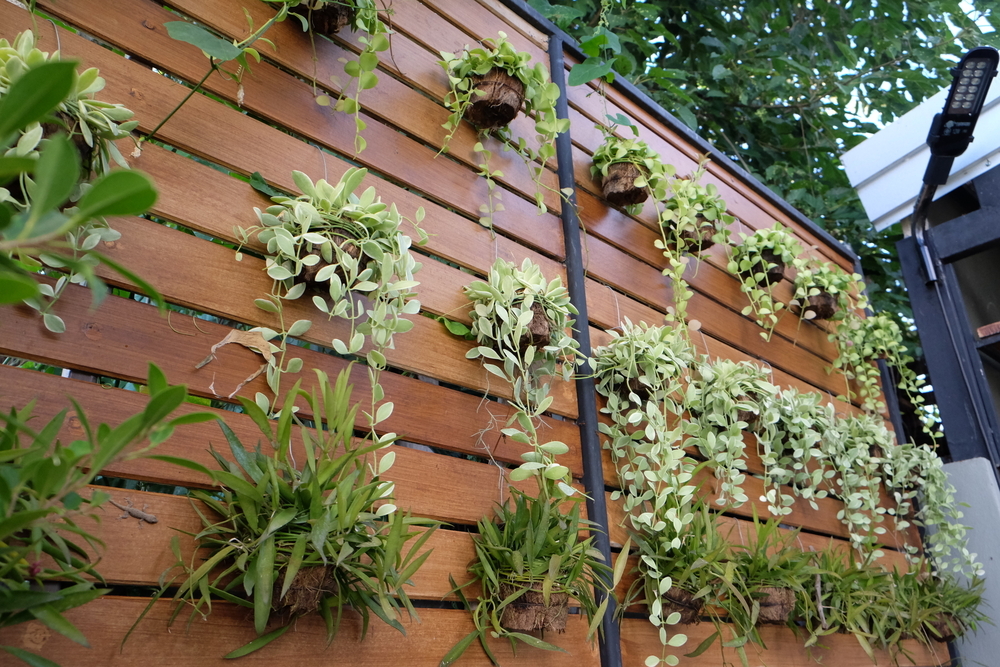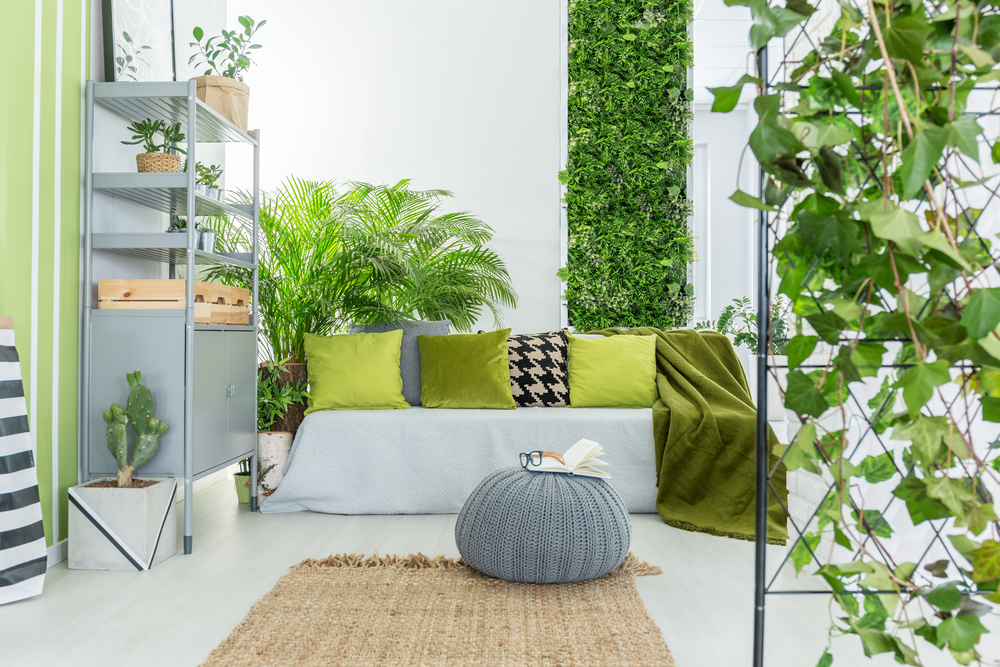Got a Small Space? 6 Ways You Can Easily Grow a Lush Vertical Garden
A little creativity and basic carpentry can turn any plain wall into a beautiful garden of herbs, flowers & succulents.

With The Positive Collective, The Better India’s COVID-19 coverage is available to regional language publications for free. Write to [email protected] for more details.
Vertical gardens are glorious—they liven up a room, add a riot of colour to the background, purify the air and sometimes even provide necessary nutrition!
But do you think that creating one requires you to live in a 20-storey building, develop an impossibly high-tech irrigation system, or spend a bomb?
Well, prepare to be surprised because the truth is that they can be grown to suit every space, level of skill, and budget.
Here are easy ways you can brighten up a wall by turning it into a vertical garden:
1. Iron mesh and wooden frame

- Nail an iron mesh into a wooden frame, so it stands firmly. Stick a plastic sheet or board on the wall that you want to turn into a vertical garden. This will keep mould away.
- Once the plastic sheet is ready on the wall, prepare 4-6 wooden blocks with the following dimensions:10x5x5 cm. These will be used to attach a jute cloth which will be the base of your vertical garden.
- Take a jute cloth which is larger than the wooden frame by at least 20 cm.
- Hold one end of the jute cloth on one top corner of the plastic sheet, place a wood block over it and drill a nail through. The jute cloth must stay firmly between the plastic and the wood block.
- Repeat this on the bottom corner of the same side. You can use two or three blocks of wood, depending on the size of your vertical garden.
- Now, stretch the jute cloth over to the other side. This is the trickiest part. Drill the wooden blocks on this side such that they turn up inside the cloth.
- The distance between the jute and the plastic sheet must be at least 5 cm (the width of your block). If you are planting plants that have longer roots, invert the wooden block to make the base 10 cm thick.
- Once this is ready, secure the bottom of the frame with a wooden plank covered in a thick plastic sheet.
- Drill the iron mesh frame onto the jute base. Add a mixture of soil, compost and coco peat in the jute base.
- Plant seeds at an appropriate distance through the iron mesh and holes of the jute cloth. Sprinkle them with water regularly.
2. Hanging pots from the iron mesh

Another way to utilise an iron mesh and make a vertical garden is to hang pots in its squares. Like in the earlier method, fix an iron mesh into a wooden frame (the mesh sheet should have a perforation of atleast one inch). Fix a plastic sheet on your wall and drill the wooden frame onto it. Paint the frame and iron as protection.
Now, get pots with hooks on them and attach them at regular distances onto the iron frame. You can also make your own planters by cutting slits into plastic bottles. Run a strong string or yarn through one side of the bottle and tie it firmly on the iron mesh. Make sure the bottle and the string are strong enough to hold the soil, plant and the water you will feed it.
3. Shelf up your vertical garden

If you have a fence or a wall that can hold hooked containers, making a vertical garden will be a piece of cake.
Upcycle metal or plastic containers by turning them into plant pots and hang them on said wall or fence. Make sure they have holes at the bottom to drip out excess water. In case you don’t have an appropriate fence or wall, try this: drill rod holders or L angles on both sides of the wall. Attach a curtain rod, wooden stick or a thin PVC pipe between them. Let your plant pots hang on them.
Keep the highest rod at a height that you can reach comfortably. The lowest can be on the floor or about one foot from the ground.
4. A vertical garden with hanging organisers

Old shoe organisers or baby accessories organisers can turn into a beautiful garden. Hang them over a wall and secure with nails so they can take the weight of the plants. Add a mixture of soil and cocopeat, plant small saplings in each pocket, and you are good to go!
The main thing to remember is that the fabric or material of the organiser needs to be very sturdy. Plant plants that don’t spread too much and don’t need much soil or water to grow. Herbs like rosemary, basil, chives can grow in such compact pockets.
5. PVC pipes

PVC pipes can be excellent bases for a vertical garden. And if you have the right equipment, they are relatively easy to make as well.
On the designated wall, drill steel pipe holders at regular intervals. There should be one holder at both ends and at least two in the middle (depending on how long a pipe you are using). Make sure they are drilled perfectly aligned.
Cut the PVC pipes in halves vertically. Carefully place them over the holders and drill screws, so they stay in place. You can keep adding rows vertically to make the garden lusher.
Add soil, coco peat etc. and grow plants that tend to spread horizontally. Coriander, mint, fenugreek will grow wonderfully in such a vertical garden.
6. Utilising a window

Whether an indoor window or one that opens outdoors, if you have one that isn’t utilised, grow a vertical garden there!
Here’s how: Drill hooks on the top plank and wind strong nylon ropes on them to suspend them. Upcycle plastic bottles to make planters and punch holes near the neck and the bottom. Run the nylon ropes through these holes and arrange the bottles as your aesthetics. Tie knots to secure the bottles. Add soil mix and plant your favourite herbs!
Tips to follow when growing a vertical garden:

- Always choose building material that can carry the weight of the soil AND the plants when they grow dense.
- Club together plants with similar sunlight and temperature requirements.
- Choose a location that is protected from rains. It must get adequate sunlight.
- Consider arranging a drip irrigation system. That way, the plant bases won’t be too heavy.
- Always use a healthy mixture of soil, cocopeat, compost and organic fertilisers. Since the plants are growing in a limited space, they will require a nutritious boost.
- The selection of plants must be meticulous. For instance, flowering plants cannot grow well on a vertical garden that doesn’t get direct sunlight. Consider the depth, width and strength of the planters while choosing your plants.
- Always have a layer of plastic separating the wall from the garden. Alternatively, you can grow a vertical garden on ceramic tiled walls to prevent mould or fungus.
(Edited by Gayatri Mishra)
Like this story? Or have something to share? Write to us: [email protected], or connect with us on Facebook and Twitter.
If you found our stories insightful, informative, or even just enjoyable, we invite you to consider making a voluntary payment to support the work we do at The Better India. Your contribution helps us continue producing quality content that educates, inspires, and drives positive change.
Choose one of the payment options below for your contribution-
By paying for the stories you value, you directly contribute to sustaining our efforts focused on making a difference in the world. Together, let’s ensure that impactful stories continue to be told and shared, enriching lives and communities alike.
Thank you for your support. Here are some frequently asked questions you might find helpful to know why you are contributing?


This story made me
- 97
- 121
- 89
- 167











